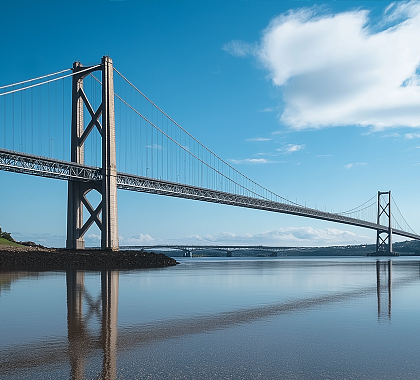According to the study “Send the Artifacts to the Museum? Digital Financial Assets as the New Infrastructure of Global Financial Markets,” the introduction of DFAs within domestic and international frameworks of BRICS countries could generate a cumulative economic effect of up to USD 50 billion by 2030, or about USD 12.5 billion annually.
Experts are already observing rapid growth in this market. The capitalization of the largest tokenized assets (physical or financial assets represented as tokens on a blockchain platform), backed by real resources, reached USD 70 billion at the beginning of 2025 — more than doubling over the past year. In Russia, the market is also showing strong growth: in the first quarter of 2025, the volume of DFAs in circulation amounted to RUB 293.5 billion, compared to RUB 50 billion a year earlier, while the number of issuances increased nearly tenfold — from 100 to 1,000.Global leadership in the DFA and closely related security token segment (digital analogues of securities or financial instruments) remains with countries that have advanced regulatory frameworks: Switzerland, Hong Kong, Germany, and Singapore. Russia, however, has quickly joined the leaders by issuance volume: by the end of 2025, DFA issuance could exceed RUB 1 trillion. This growth has been driven by the active support of the Bank of Russia and the significant potential for using DFAs in international settlements.
In Russia, DFAs have gained popularity not only as instruments replacing traditional financial tools but also as a means of tokenizing “non-traditional” assets—from artworks and charity projects to palladium and film production. For example, in February 2025, the first art token backed by contemporary art with a guaranteed 15% annual return was issued in Russia.
“We are witnessing a tectonic shift in financial infrastructure. DFAs are an opportunity for developing economies not just to catch up but to leapfrog outdated systems and create more efficient, transparent, and accessible capital markets. With DFAs, Russia and BRICS members can build their own financial infrastructure, independent of the institutions of the Global North”
Ilya Ivaninsky, Expert Partner at Yakov and Partners and Director of the Center for Business Education and Analytics at the Central University
According to him, the greatest potential of DFAs lies precisely in transforming international infrastructure. Creating a new mechanism for mutual investment between BRICS countries—independent of traditional systems—could increase investment volumes and reduce funding costs. This would produce an economic effect of up to USD 48 billion by 2030, which could partially offset the USD 1.5–2.5 trillion investment gap.
Domestically, DFAs also open new opportunities for businesses and can become an alternative funding instrument. In Russia, issuing DFAs takes only a few days, whereas traditional bond placements can take months. Direct issuance costs remain relatively low. Historically, the Russian market was constrained by tax rules: issuers could not deduct interest payments on DFAs from taxable income. Now, legislative amendments are being prepared to remove this imbalance. If adopted, up to 10% of corporate loans could be transformed into DFA format.
“Due to their low cost and high issuance speed, DFAs will open access to funding for SMEs that previously could not use traditional instruments. Lower interest rates on DFA debt instruments can help businesses save on borrowing costs. For example, if the DFA borrowing rate is just 10 basis points lower than that of traditional loans, and DFAs account for 10% of the credit portfolio, SMEs in BRICS countries could save up to USD 0.5 billion annually”
Sergey Panfilov, Deputy Director of the Center for Business Education and Analytics at the Central University
At the international level, DFAs could become a game changer. Today, over 63% of global investments are concentrated in developed countries, with nearly a third of cross-border capital flows controlled by the United States. Mutual investments among developing countries remain limited: 39% of their investments go to developed markets, while the reverse flow amounts to only 18% of GDP.
The creation of an independent BRICS Clear depository and settlement system, established under the Kazan Declaration of 2024, could save BRICS countries USD 9–12 billion annually by reducing spreads (the difference between the best bid and ask prices of an asset at a given moment) in emerging markets.
“DFAs are the next stage in the evolution of financial markets. At the same time, realizing their potential will require not only technological solutions but also institutional coordination. The main challenge lies in harmonizing legislation and regulatory norms both within and between countries. Without these steps, DFAs risk remaining local experiments. Those states that are first to build a sustainable DFA ecosystem will gain access to new sources of liquidity and strengthen their positions in global capital markets”
Dmitri Angarov, Partner at Yakov and Partners.



